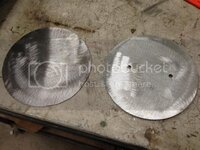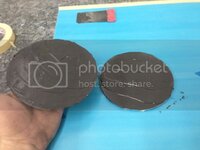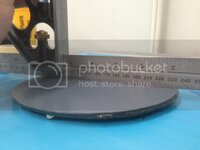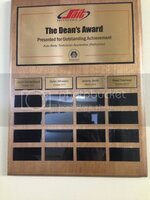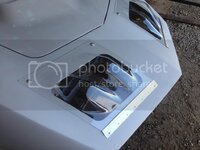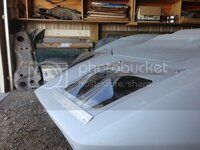Someone over on another forum asked me about primers. I thought this info would be good for this forum as well.
The problem with paint products is the solvent within them. Solvents are used in every paint manufactured for one specific reason - to make it sprayable. Every product has solvent in it, straight out of the can. Once the product is sprayed and applied to a panel, it starts to cure. The solvents which are in the product are evaporated during the curing process, which results in the product shrinking, and tightening up. Thus, if you use too coarse of a paper (this fact is important, as this will only happen with too coarse of a paper), apply urethane primer, let it sit a day, prep it, paint it in 2 days...it looks great. However, once the primer fully cures, it evaporates all of its solvents through the paint applied on top of it...thus...you get shrinkage, and sand scratch swelling showing on the finished panel. If however you apply the urethane primer to a panel with 180 grit and finer, you can use the above method without sandscratch swelling, and no ill affects to the paint surface once fully cured.
Most people have problems with sinkage due to using too coarse of a paper before urethane primer. If you let it fully cure before prep, yeah, you can get away with it without sinkage later on. But this is the real world. People need their vehicles and projects pronto.
Another key note is that you can only get your bodywork so straight...you need primer to finish the panel to make it straight. You can block filler all day long, for weeks at a time - you will never get it perfect. Here is where you make your decision on which primer to use first.
Slick sand is polyester based. It has minimal solvents within the product, which ultimately results in almost zero shrinkage once sprayed, if you don't reduce it. However, you aren't supposed to paint on top of slick sand. It is a sprayable body filler. If you have a lot of bodywork going on on panel, or it is a show car, then this is the primer you should use first. Urethane primer on the other hand has a lot of solvent in it, but you can paint on top of it. For this reason you should always use slick sand on fiberglass panels to seal them up.
Guys will spray 15 coats of k36 primer and block all of that out...that's a lot of solvent on a panel. If you spray slick sand unreduced, With very little fan (it takes a lot of passes), you eliminate a ton of solvent on the panel. Slick sand won't shrink if you do it this way. It goes on very thick. You apply a maximum of 3 coats at a time, any more than that and you are risking the product not fully curing through. It is a sprayable body filler. You block it out with 180 grit, and if you find any low spots, you decide whether to use a 2 part body putty to fill it (which is designed to go on top of primers), or spray more coats of slick sand. Once you have your panels straight, the next step is urethane primer.
You apply 3 coats of urethane primer next. Your panel is now super straight, and the urethane primer is going to finish any small areas which weren't perfect in the slick sand.
Polyester primer (slick sand) is an amazing product when used properly. It eliminates endless amounts of times spraying coat after coat of urethane primer. It does all of this without the shrinkage. It also blocks better than urethane primer.
If you leave activated unreduced slick sand in a mixing cup overnight, it hardens into a hockey puck and is fully cured by the next morning. If you leave activated urethane primer in a mixing cup overnight, it hardens into a soft cookie, and you can still smell the solvent inside that cookie.
Sometimes panels just need urethane primer (even on our show cars, sometimes a panel is straight enough for urethane primer), and this is where experience comes into play. I've been taught very well by my boss Byron. I ask a lot of stupid questions, but if I didn't ask them, I wouldn't know any of this. If you guys need any help, I'd be more than happy to answer your questions.

